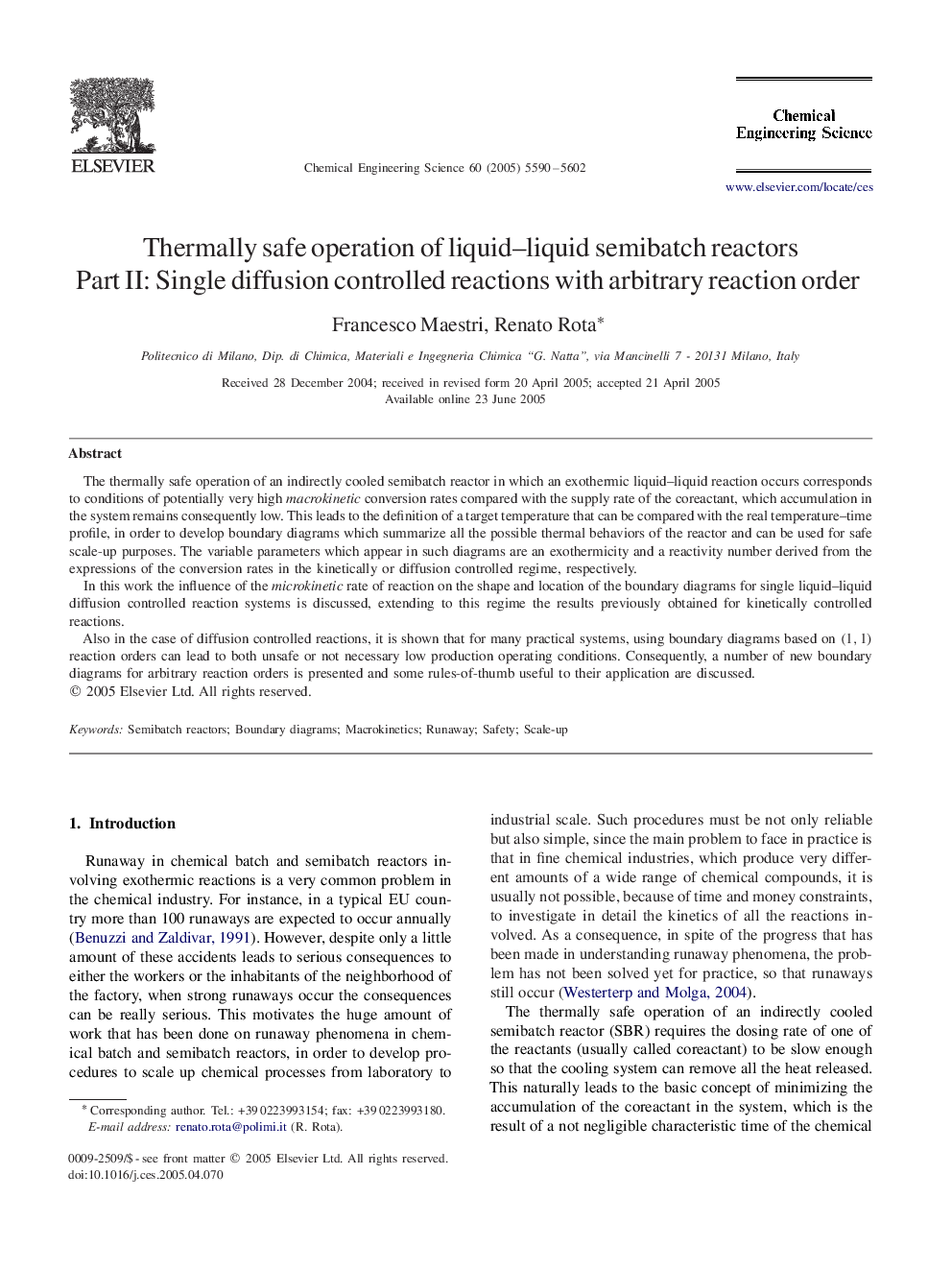| Article ID | Journal | Published Year | Pages | File Type |
|---|---|---|---|---|
| 161064 | Chemical Engineering Science | 2005 | 13 Pages |
The thermally safe operation of an indirectly cooled semibatch reactor in which an exothermic liquid–liquid reaction occurs corresponds to conditions of potentially very high macrokinetic conversion rates compared with the supply rate of the coreactant, which accumulation in the system remains consequently low. This leads to the definition of a target temperature that can be compared with the real temperature–time profile, in order to develop boundary diagrams which summarize all the possible thermal behaviors of the reactor and can be used for safe scale-up purposes. The variable parameters which appear in such diagrams are an exothermicity and a reactivity number derived from the expressions of the conversion rates in the kinetically or diffusion controlled regime, respectively.In this work the influence of the microkinetic rate of reaction on the shape and location of the boundary diagrams for single liquid–liquid diffusion controlled reaction systems is discussed, extending to this regime the results previously obtained for kinetically controlled reactions.Also in the case of diffusion controlled reactions, it is shown that for many practical systems, using boundary diagrams based on (1,1)(1,1) reaction orders can lead to both unsafe or not necessary low production operating conditions. Consequently, a number of new boundary diagrams for arbitrary reaction orders is presented and some rules-of-thumb useful to their application are discussed.
